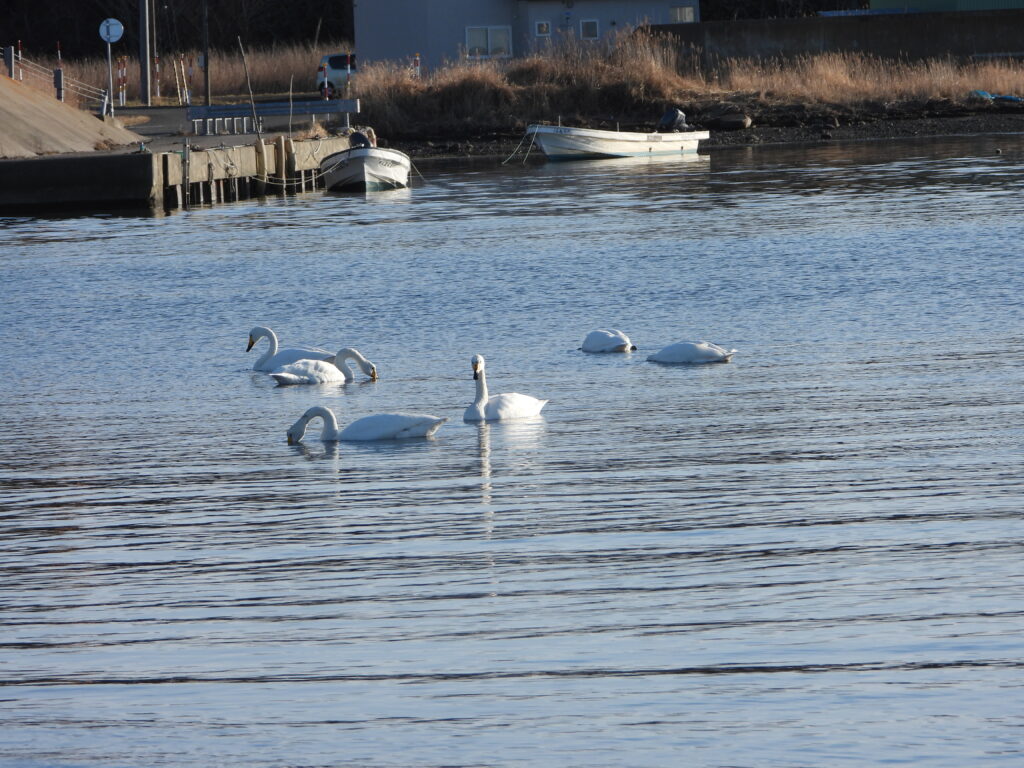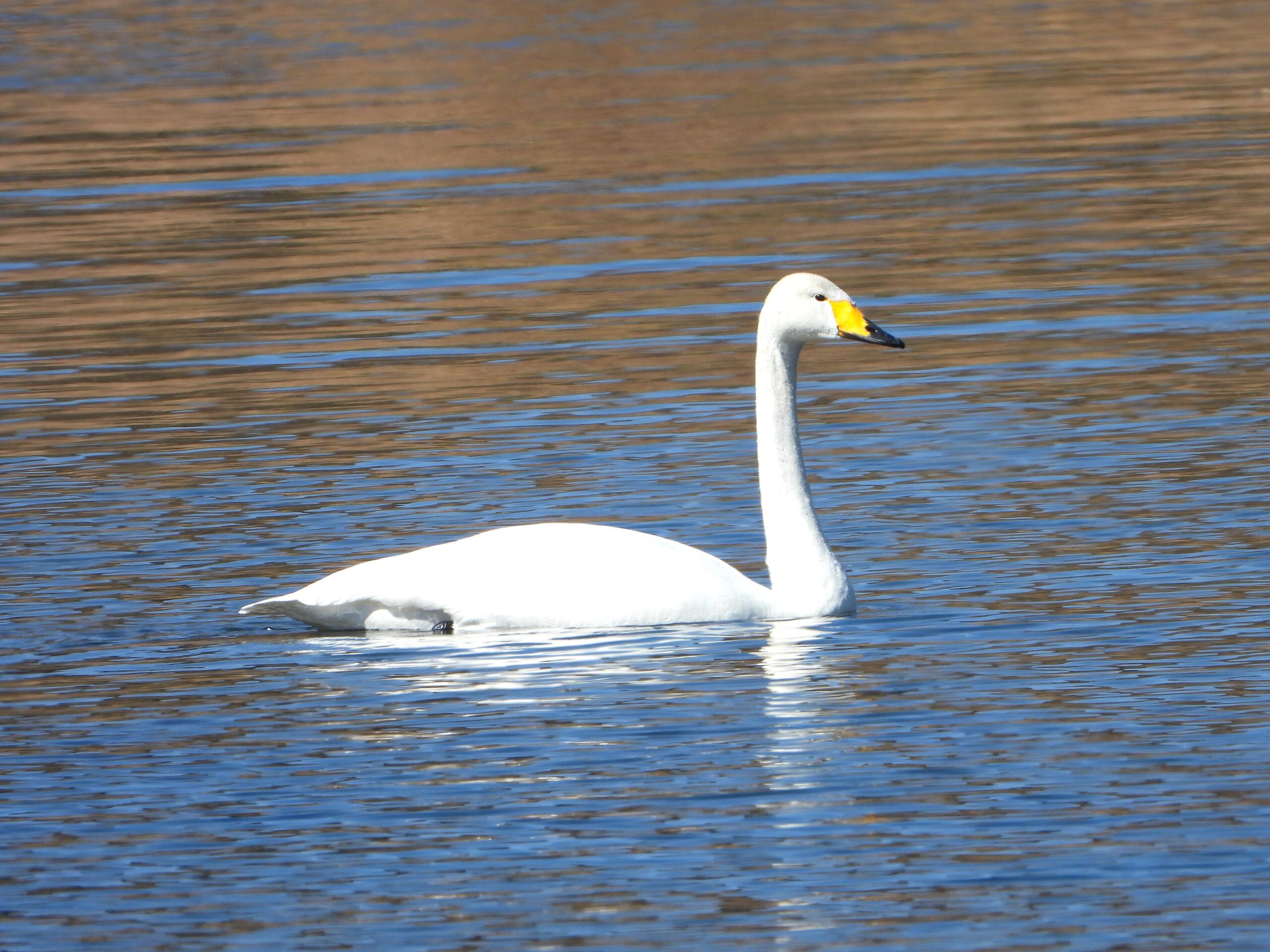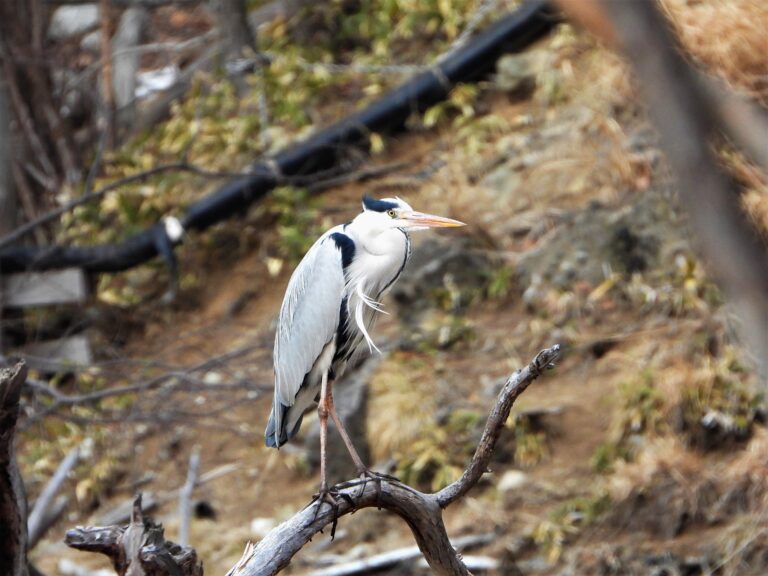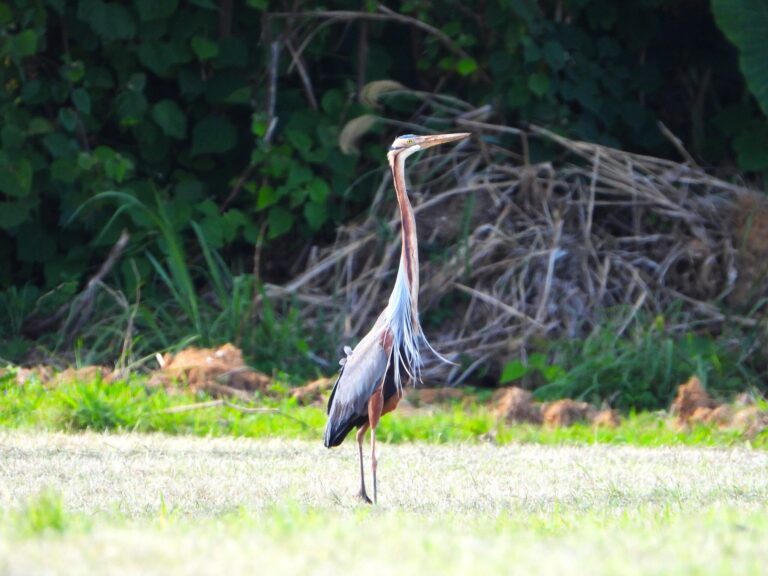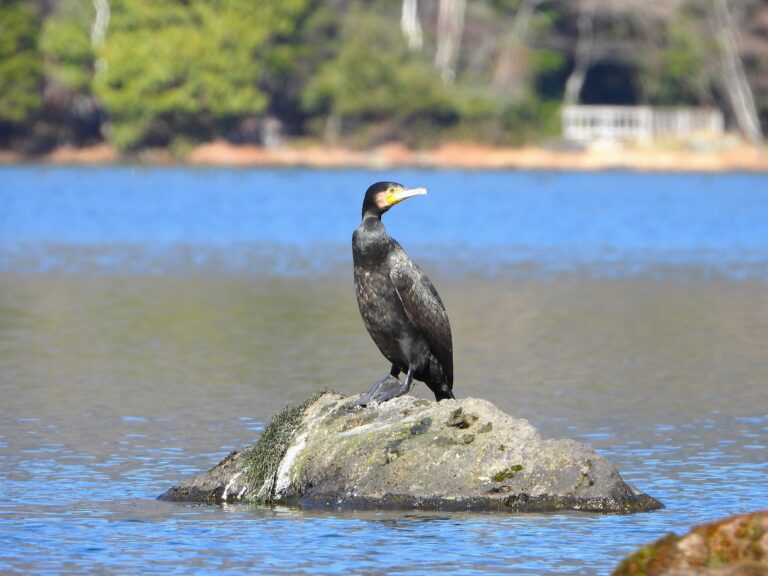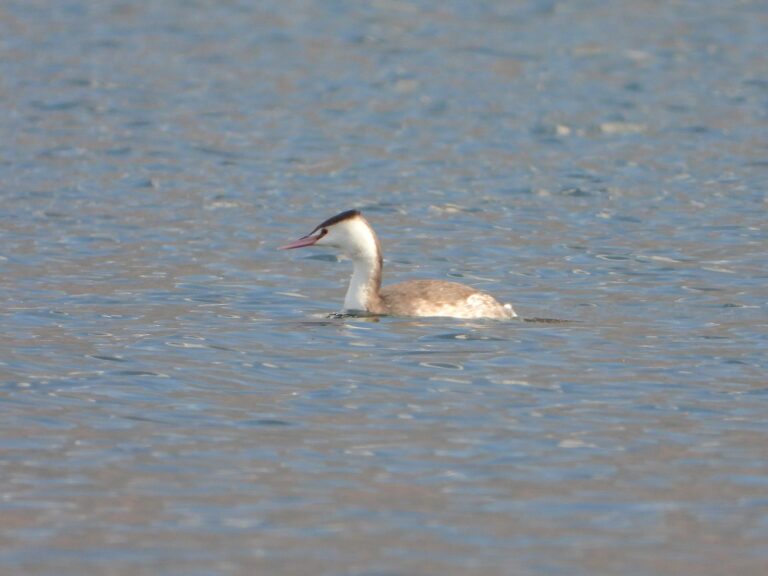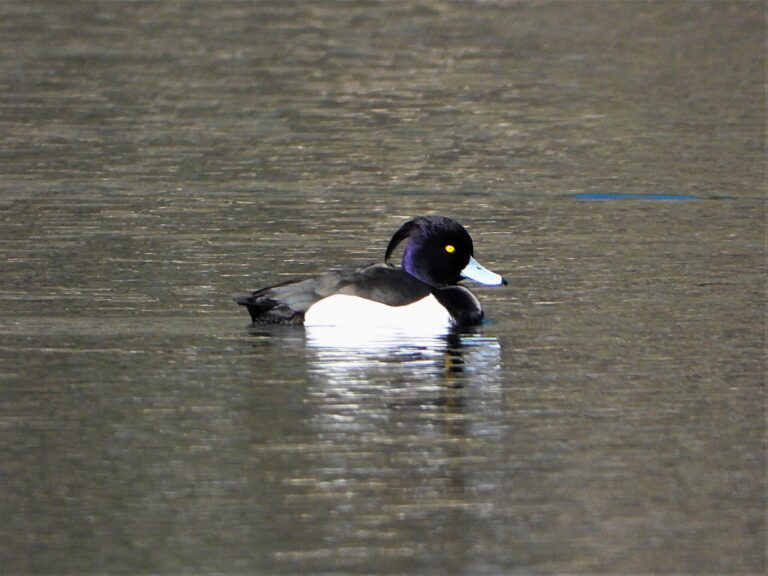Whooper Swan (Cygnus cygnus) – Wildlife of Japan
Introduction
The Whooper Swan is a magnificent, trumpet-voiced swan of northern Eurasia. Every winter, thousands migrate south from Siberia to Japan, gracing lakes and wetlands from Hokkaido to northern Honshu. Globally, it is classified as Least Concern by the IUCN, and in Japan it is a well-protected and beloved winter visitor.
Appearance
A large, long-necked white swan, measuring around 140 cm in length, with a wingspan of 205–235 cm, and weighing up to 12 kg. The bill is mostly yellow with a distinct triangular patch pointing toward the tip, unlike the smaller Tundra Swan whose yellow area is rounded and reduced. Legs and feet are black, and juveniles appear grayish with pinkish bills that darken as they mature.
Their loud, resonant “whoop-whoop” call carries far across frozen lakes — the origin of their English name.
Habitat & Distribution
The species breeds across the northern Palearctic, from Iceland and Scandinavia through Siberia, nesting in tundra wetlands and northern lakes.
In Japan, it is strictly a winter visitor, with large populations arriving in Hokkaido and the Tōhoku region. Typical habitats include shallow lakes, marshes, estuaries, and flooded rice fields.
Seasonal pattern:
- Arrival: Early to mid-October
- Peak: November to February
- Departure: March to early April
Tracking data from Japan’s Ministry of the Environment shows that most individuals leave in late March, migrating through Sakhalin toward Russian breeding grounds.
Where to See in Japan
- Lake Kussharo (Kotan / Sunayu, Hokkaido): Hot springs keep parts of this lake unfrozen, attracting large flocks.
- Lake Tōfutsu (Abashiri, Hokkaido): A Ramsar wetland hosting thousands each winter.
- Lake Utonai (Tomakomai, Hokkaido): Key migration stopover and overwintering site.
- Izunuma–Uchinuma (Miyagi): A major Ramsar wetland and one of Japan’s best places to see Whooper Swans.
- Hyōko (Agano City, Niigata): Japan’s famous “swan lake,” where 53 birds arrived on October 7, 2025 — the season’s first record.
- Ogawara Lake (Aomori): An important wintering site in northern Honshu.
Behavior
Whooper Swans are powerful fliers and highly social. They form long-term pair bonds and migrate together in family groups.
They feed during the day and rest on open water at night. Their coordinated calls and movements create a graceful, almost orchestral harmony across frozen lakes.
Diet
Mainly aquatic plants — roots, stems, and leaves of pondweeds, sedges, and other wetland vegetation.
In agricultural areas, they also feed on rice stubble, waste grain, and tubers left after harvest.
Many wetlands now discourage artificial feeding to prevent overcrowding and dependence on humans.
Reproduction (outside Japan)
Breeding occurs from late May to early June in northern Europe and Asia. Nests are built on small islets or tundra mounds near lakes.
They lay 4–5 eggs, incubate for 31–35 days, and the young fledge after about three months.
In Japan, breeding is extremely rare, though a few individuals sometimes remain year-round at Lake Utonai.
Conservation & Notes
The species is globally stable but faces local threats from habitat alteration, agricultural conflicts, and avian influenza.
Japan’s Ramsar wetlands — such as Hyōko, Izunuma–Uchinuma, Tōfutsu, and Utonai — play vital roles in protecting wintering flocks.
The Ministry of the Environment advises against feeding or handling wild birds to maintain natural behavior and reduce disease risks.
Author’s Impression
I observed a large flock of Whooper Swans during winter in Hokkaido — an overwhelming and majestic sight unique to Japan’s frozen north.
